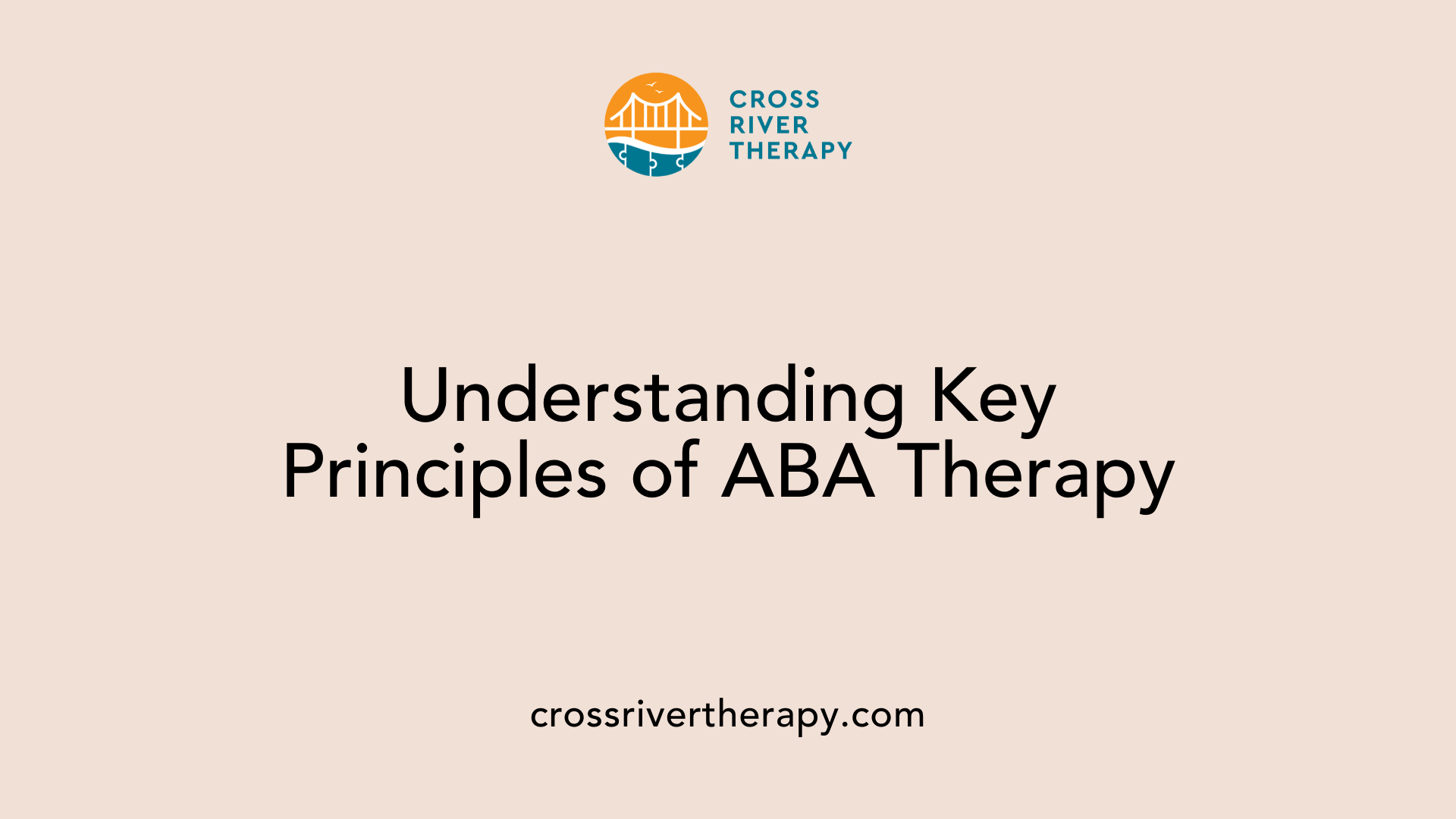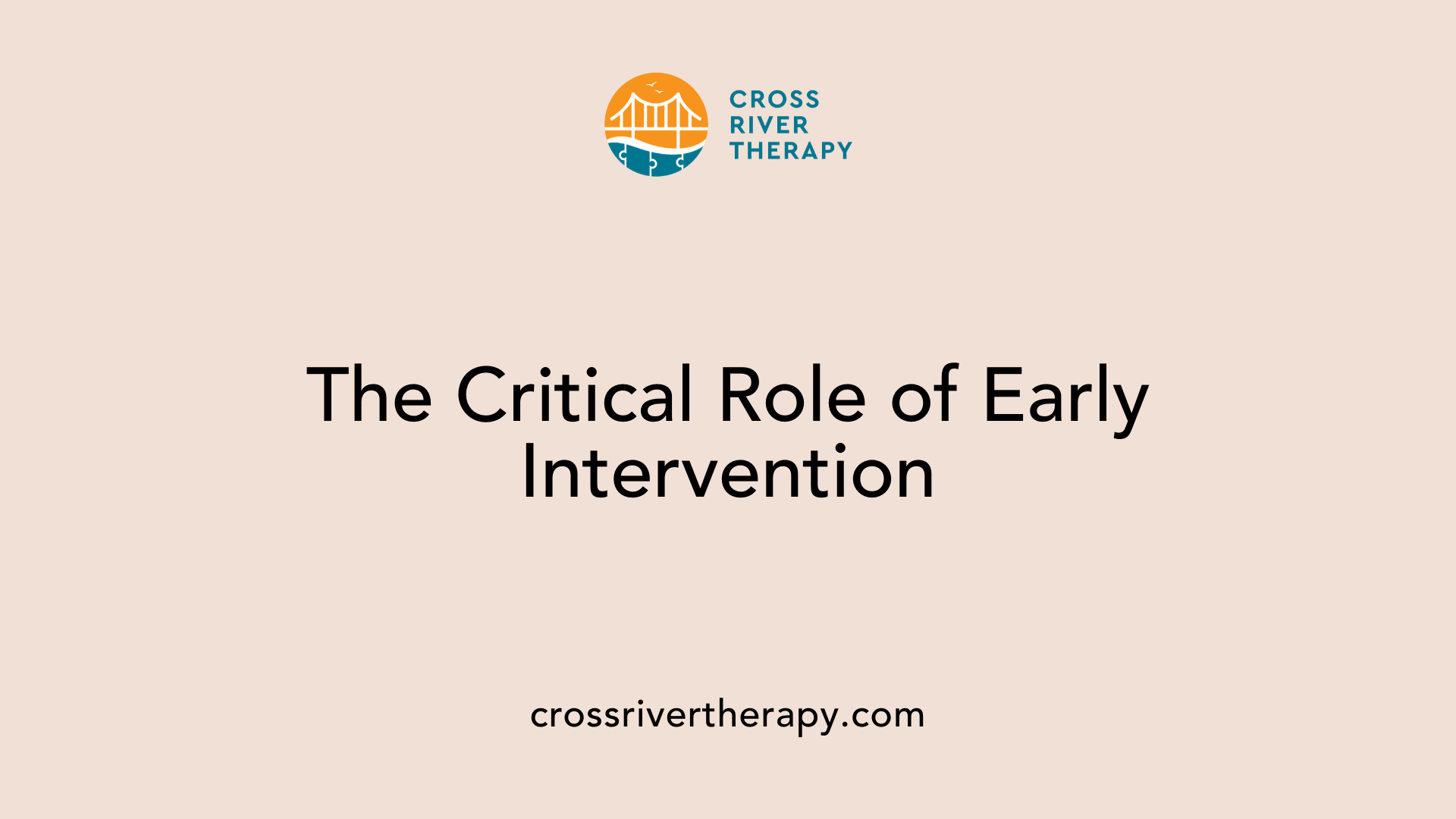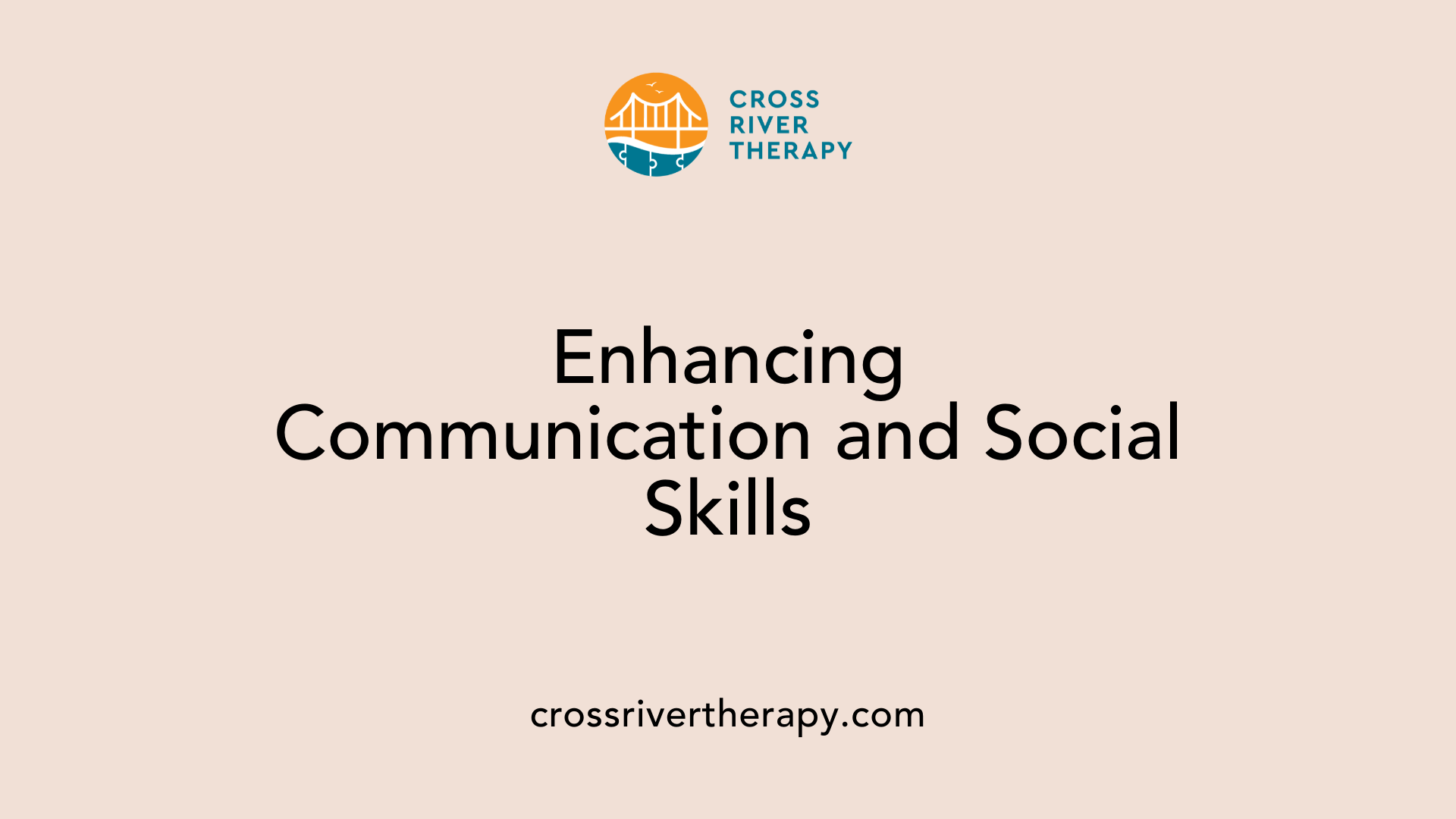How ABA Therapy Builds Confidence
Empowering Children Through Applied Behavior Analysis
Introduction to Building Confidence through ABA
Applied Behavior Analysis (ABA) therapy stands out for its structured and scientific approach to fostering confidence in children, especially those on the autism spectrum. By integrating behavior principles with positive reinforcement and personalized strategies, ABA helps children overcome challenges, develop vital skills, and gain self-assurance.
Principles and Techniques of ABA Therapy

What is Positive Reinforcement in ABA Therapy?
Positive reinforcement is a fundamental technique used in ABA therapy. By rewarding desired behaviors, children learn to associate these actions with positive outcomes. For instance, if a child successfully completes a task on their own, praise or small rewards can motivate them to repeat this behavior. Over time, this boosts their self-esteem and encourages them to engage in new challenges.
How Does Behavior Modification Work in ABA?
Behavior modification in ABA focuses on altering undesirable actions while reinforcing desirable ones. Techniques such as task analysis break routines into smaller, manageable steps, allowing children to master daily living skills like toileting or self-care tasks. Additionally, errorless learning techniques help children receive prompts until they can respond independently, fostering confidence in their abilities.
Through consistent practice and structured routines, children develop resilience and a sense of accomplishment, leading to improved behavioral regulation and social interactions.
What are SMART Goals in ABA Therapy?
Goal setting is crucial for measuring progress in ABA therapy. SMART goals—Specific, Measurable, Achievable, Relevant, and Time-bound—offer a personalized approach tailored to each child’s unique strengths and challenges. By defining clear and attainable objectives, children can witness their growth, reinforcing their self-worth and confidence over time.
| Principle | Description | Example |
|---|---|---|
| Positive Reinforcement | Encourages desired behaviors through rewards, enhancing self-esteem and motivation. | Praising a child for sharing toys with peers. |
| Behavior Modification | Uses techniques like task analysis to change undesirable behaviors while teaching new skills. | Teaching tooth brushing by breaking it down. |
| SMART Goals | Personalized goals that guide progress and focus on the child's individual abilities and needs. | Setting a goal for increasing effective communication. |
Understanding these principles can vastly improve the therapy experience, making ABA an effective method for facilitating behavior change and enhancing life skills.
Early Intervention and Its Impact

When is ABA therapy most effective for early intervention?
ABA therapy is most effective for early intervention when started between ages 0 and 2. This period is critical for developing fundamental skills such as eye contact, vocalization, and imitation. Initiating therapy during this age range leads to significantly better long-term outcomes.
For children aged 2 to 6, the focus of ABA therapy should shift towards enhancing language development, play skills, and advanced social interactions. These skills are essential for establishing basic social abilities and for fostering communication.
Even though early intervention is key, it's important to note that ABA therapy remains beneficial for children over 6 years old. For these older children, the therapy’s focus often transitions toward independent living skills, preparing them for greater autonomy in their daily lives.
What are the long-term benefits of early ABA intervention?
Initiating ABA therapy as early as possible facilitates better adaptation and learning in children with autism spectrum disorder. Long-term benefits include improved communication skills, enhanced socialization and increased independence, all contributing to higher self-confidence and better quality of life as the child grows.
| Age Group | Focus Areas | Long-Term Benefits |
|---|---|---|
| 0 - 2 years | Eye contact, vocalization | Foundation for communication skills, social interactions |
| 2 - 6 years | Language, play skills | Improved social interactions, enhanced language abilities |
| 6+ years | Independent living skills | Greater autonomy, increased self-sufficiency in daily tasks |
Engaging in early ABA therapy not only creates lasting changes but also enhances a child’s confidence, allowing them to navigate life more effectively.
Promoting Communication and Social Interactions

Enhancements in Verbal and Non-Verbal Communication
ABA therapy is pivotal in improving communication skills, particularly for children with autism. The method leverages both verbal and non-verbal communication strategies, significantly boosting a child’s confidence in expressing needs and feelings. For example, children who participate in ABA may see their ability to articulate needs escalate from 40% to 80% after undergoing targeted interventions.
Furthermore, techniques such as Functional Communication Training (FCT) help children learn to communicate their desires effectively. This focus on communication not only reduces frustration but also fosters a greater sense of independence, as children begin to navigate their social environments more competently.
Importance of Social Skills Training
One essential aspect of ABA therapy is its emphatic approach to social skills training. The therapy uses systematic methods to teach children how to interact appropriately within their social contexts. Participants engage in activities designed to enhance their ability to initiate conversations, collaborate in group activities, and recognize social cues.
For instance, engaging in Discrete Trial Training (DTT) and role-playing exercises allows children to practice skills in a controlled setting, gradually transferring these skills to real-life situations. The benefits are evident, as participation in group activities can increase from 35% to 75% after therapy. Ultimately, this training equips children with the skills necessary to forge meaningful relationships, enhancing their overall confidence and social viability.
Structured Teaching and Independence

What is the role of structured teaching in ABA therapy?
Structured teaching is a fundamental component of Applied Behavior Analysis (ABA) therapy. It utilizes predictable environments and clear expectations to reduce anxiety in children, particularly those with autism. This approach helps children understand the framework within which they are learning, promoting a sense of security that allows them to engage more fully in activities. For instance, using visual schedules and consistent routines helps children anticipate transitions, making it easier for them to adapt to new tasks.
How does ABA build independence through daily living skills?
ABA therapy emphasizes fostering independence by teaching essential daily living skills. These skills include self-care, such as bathing and dressing, as well as household tasks like setting the table or meal preparation. Through systematic teaching methods, children learn to manage these tasks in a structured manner, gradually gaining the confidence to perform them autonomously. This process involves breaking down complex skills into manageable steps, allowing children to celebrate small successes along the way, which builds their overall confidence.
Why are routines important in ABA?
Routines hold significant importance in ABA therapy as they provide predictability and a sense of security for children. Structured routines help minimize anxiety by creating familiar patterns that children can rely on. When children know what to expect, they are more likely to engage in learning opportunities and take risks in trying new skills. Consistent routines reinforce desired behaviors through repetition and positive reinforcement, ultimately enhancing their self-esteem and readiness to learn independently.
Positive Reinforcement and Building Self-Esteem
Impact of Positive Reinforcement
Positive reinforcement is a fundamental aspect of ABA therapy, effectively motivating children with autism to engage in desired behaviors. When children are praised or rewarded for specific actions, such as completing a task independently or successfully interacting with peers, they form positive associations with those behaviors. This recognition not only encourages the repetition of such actions but also cultivates an overall sense of accomplishment.
Relations Between Self-Esteem and Confidence
There is a strong link between self-esteem and confidence, particularly in young individuals navigating their developmental journeys. As children build their self-esteem through achieving small goals, their confidence naturally grows. This confidence enables them to take on new challenges, further enhancing their self-image and willingness to engage in various social situations.
Role of Rewards
Rewards play a crucial role in reinforcing positive behaviors, whether through praise, tangible rewards, or other forms of recognition. By consistently applying rewards in a structured manner, ABA therapy helps children feel valued for their efforts. As these positive experiences accumulate, children can develop a resilient self-esteem, empowering them to approach life's challenges with confidence.
Individualized Plans and SMART Goals

Creating Personalized Learning Plans
One of the cornerstones of ABA therapy is the development of individualized learning plans tailored to each child's unique strengths and challenges. These personalized plans help focus on specific behaviors and skills that need improvement, ensuring that therapy is relevant and effective. By assessing each child’s needs, therapists can design strategies that not only promote progress but also encourage independence.
Importance of SMART Goals
In creating these individualized plans, the use of SMART goals is essential. SMART stands for Specific, Measurable, Achievable, Relevant, and Time-bound. This approach ensures that therapy objectives are clearly defined and measurable, which helps in tracking progress over time.
Using SMART criteria allows children to set realistic targets, fostering a sense of achievement as they reach these goals. For example, a child may aim to improve verbal communication skills from expressing needs at 40% to 80% within a set timeframe. This structured goal-setting not only enhances engagement but also builds confidence as children experience incremental successes on their journey toward independence.
Parental Involvement and Home Reinforcement
Importance of Parental Participation
Parental involvement is critical in ABA therapy, significantly impacting a child’s progress. Families collaborate closely with therapists, receiving guidance on how to reinforce skills learned during therapy in everyday settings. This consistent support at home encourages children to generalize their learning, making it more likely that they will apply new skills independently in various situations.
Transferring Skills to Home Environments
To effectively transfer skills to home environments, parents can actively participate in therapy sessions, employing techniques like Discrete Trial Training or Pivotal Response Training. This practice ensures learning is continuous and reinforced. For instance, parents can apply Positive Reinforcement strategies by praising their child when they use new communication techniques at home.
By integrating therapy techniques with home routines, children not only enhance their learning experiences but also build confidence through successful practice. This synergy of learning creates a nurturing atmosphere where children receive the emotional support they need, which is fundamental for their overall development.
Evidence-Based Approaches and Data Collection
Importance of Data-Driven Strategies
Data-driven strategies are vital in Applied Behavior Analysis (ABA) therapy as they ensure that interventions are effective and tailored to the individual's progress. By systematically collecting data, therapists can identify which approaches yield the best results and make necessary adjustments. This evidence-based practice helps develop a specific plan that targets the unique needs of each child with autism, facilitating targeted skills acquisition and behavior modification.
Tracking Progress
Regularly monitoring progress is a key component of ABA therapy. Progress tracking involves analyzing data collected during sessions, which can include instances of desired behaviors, participation in social activities, and improvements in communication. For example, records may show enhancements in social interaction frequency from 35% to 75% due to specific interventions. This ongoing assessment allows parents, therapists, and children to celebrate successes and reinforce a child's self-confidence, making each achievement a building block for further growth.
Behavioral Achievements and Confidence
Role of Achieving Behavioral Milestones
Achieving behavioral milestones is crucial for children with autism as it directly affects their overall development. These milestones typically include essential skills such as language development, self-care routines, and social interactions. Each achievement acts as a building block for future success, laying the groundwork for complex skills required in daily life.
For instance, learning to express needs independently can improve from 40% to 80% proficiency through targeted ABA techniques, fostering effective communication. This skill not only enhances interactions with others but also significantly boosts a child's self-esteem, as they feel more understood and capable.
Confidence Through Skill Mastery
Mastery of skills leads to increased confidence, as children engage in structured routines and practice consistently. As they gain proficiency in tasks—no matter how small—children experience a sense of accomplishment. For example, improvements in waiting for turns can rise from 20% to 60%, instilling a sense of control and achievement.
Furthermore, as they master daily living skills, such as dressing or meal preparation, children gain autonomy which translates into self-assurance. The positive reinforcement strategies employed in ABA therapy ensure that these successes are celebrated, reinforcing the belief that they can manage increasingly complex tasks—paving the way for independence and greater self-esteem.
Real-Life Success Stories
How does ABA therapy help children?
ABA therapy empowers children through a structured, individualized framework that leverages behavioral principles to facilitate growth. By focusing on increasing communication and social skills while diminishing unfavorable actions, it enhances a child's emotional development. Parents often share inspiring success stories reflecting remarkable personal growth, showcasing the real-world impact of ABA therapy.
For instance, a child who initially struggled with communication improved from expressing needs only 40% of the time to an impressive 80% post-therapy, allowing for more effective interactions with peers and family. This increase not only fosters independence but also contributes significantly to the child's self-esteem.
Effects on emotional development
Emotional regulation is another area where ABA therapy shines. Children learn self-control techniques, such as deep breathing, which help them navigate overwhelming situations and reduce behavioral outbursts. One family reported their child transitioned from frequent tantrums to calmly awaiting their turn, a shift from 20% to 60% success in impulse control after several months of consistent ABA therapy.
These stories exemplify the lasting effects of ABA therapy on emotional and social development, empowering children with skills that transcend structured settings, thus enhancing their confidence and ability to thrive in everyday life.
Conclusion: Building a Path to Confidence
ABA therapy is a pivotal tool for developing confidence in children with autism by employing personalized and evidence-based approaches. Through early intervention, tailored lesson plans, and employing techniques like positive reinforcement, ABA therapy not only addresses developmental challenges but also empowers children to thrive in their interactions and daily life. By building a robust foundation of skills and self-esteem, ABA therapy gives children the confidence they need to succeed in various aspects of their lives, encouraging their independence and personal growth.
References
- ABA Services: Building Confidence in Early Learners
- Building Confidence with ABA Therapy - Goldstar Rehabilitation
- How ABA Therapy Builds Independence
- The Benefits of ABA Therapy - The Autism Therapy Group
- How Can I Help My Autistic Child Build Confidence?
- How ABA Therapy Helps Build Confidence?
- Building Confidence in Kids with ABA Therapy - ABATherapistJobs ...
- How ABA Therapy Build Independences in Daily Routines
Table of Contents
- Principles and Techniques of ABA Therapy
- Early Intervention and Its Impact
- Promoting Communication and Social Interactions
- Structured Teaching and Independence
- Positive Reinforcement and Building Self-Esteem
- Individualized Plans and SMART Goals
- Parental Involvement and Home Reinforcement
- Evidence-Based Approaches and Data Collection
- Behavioral Achievements and Confidence
- Real-Life Success Stories
- Conclusion: Building a Path to Confidence
- References



